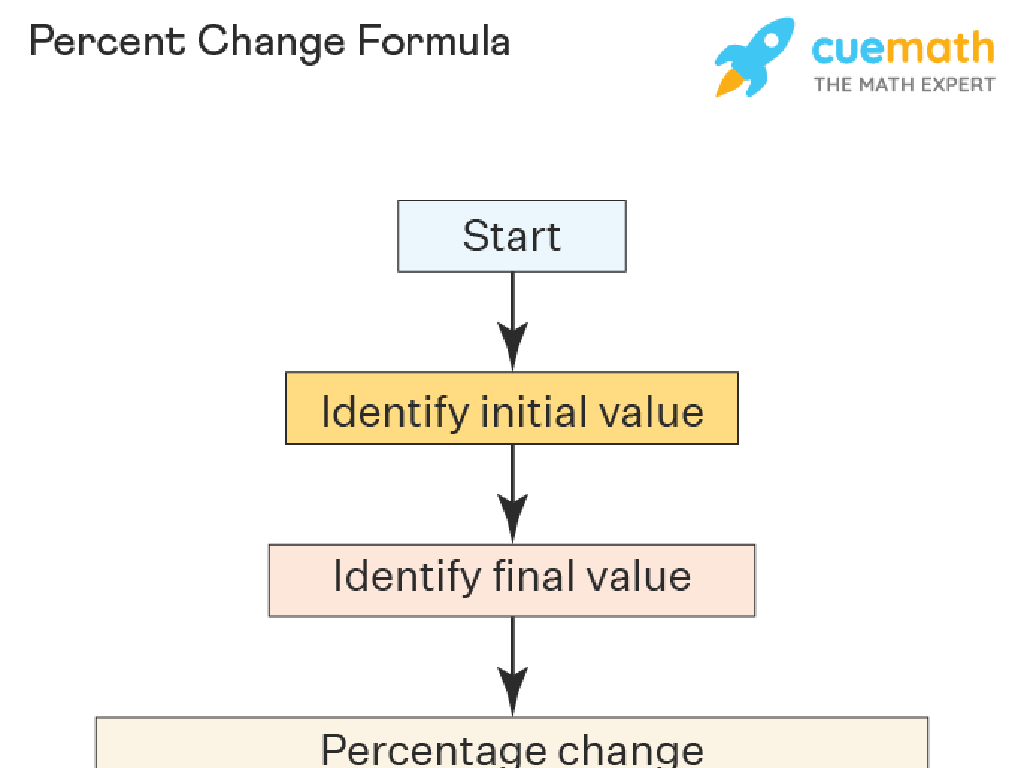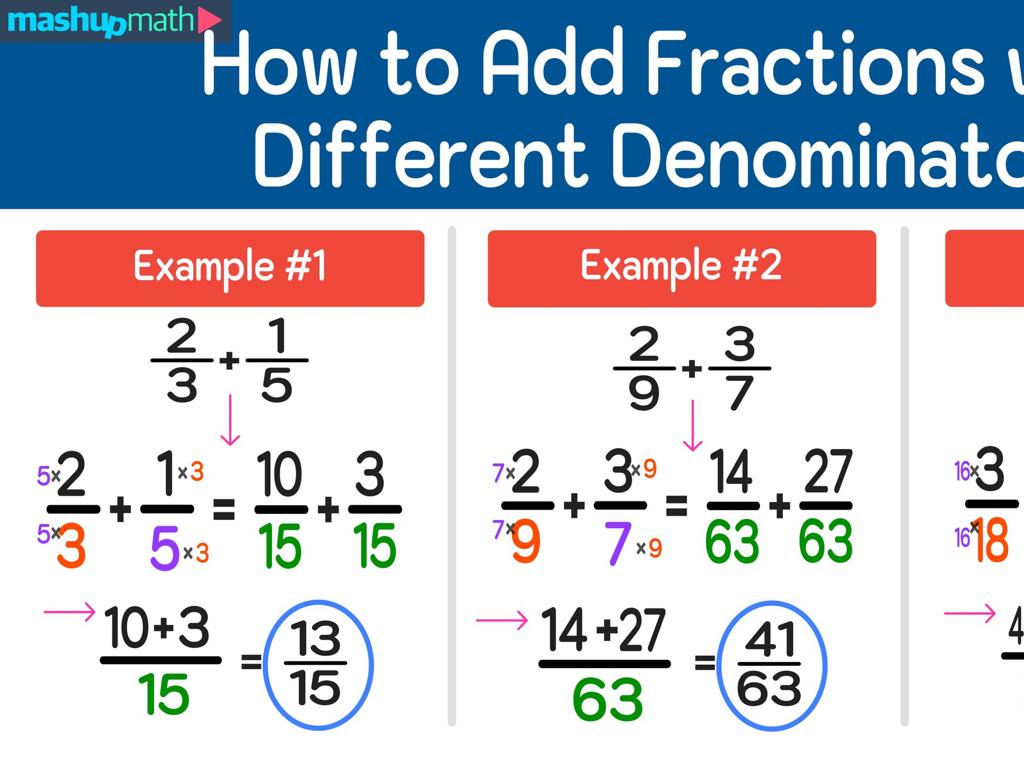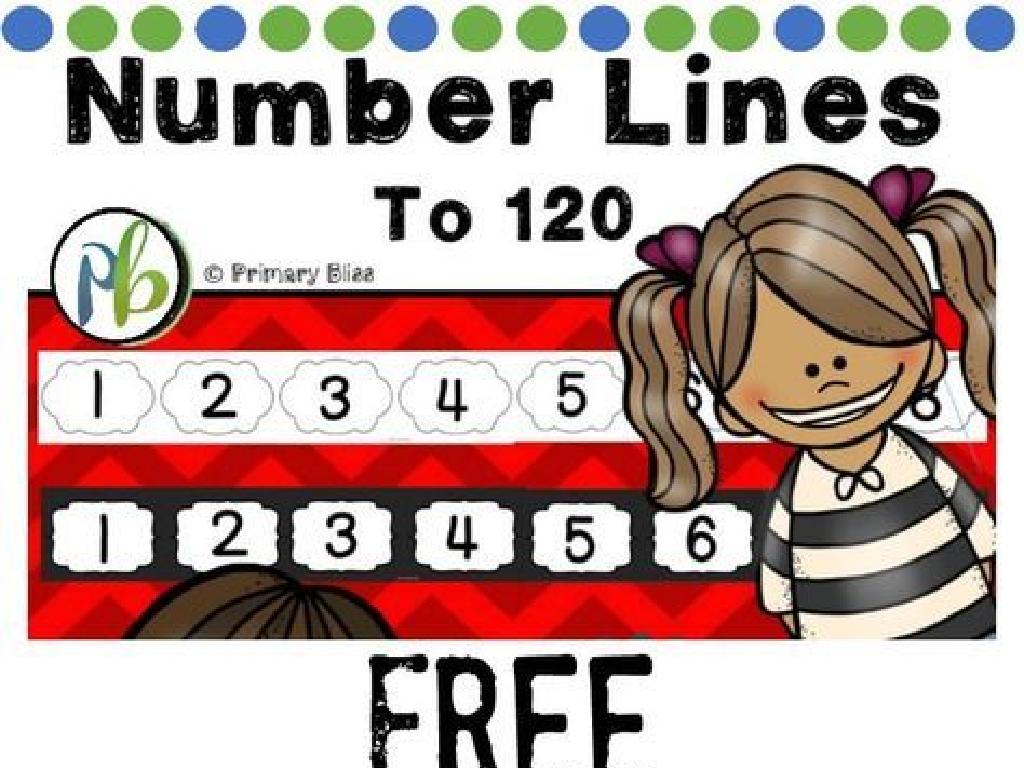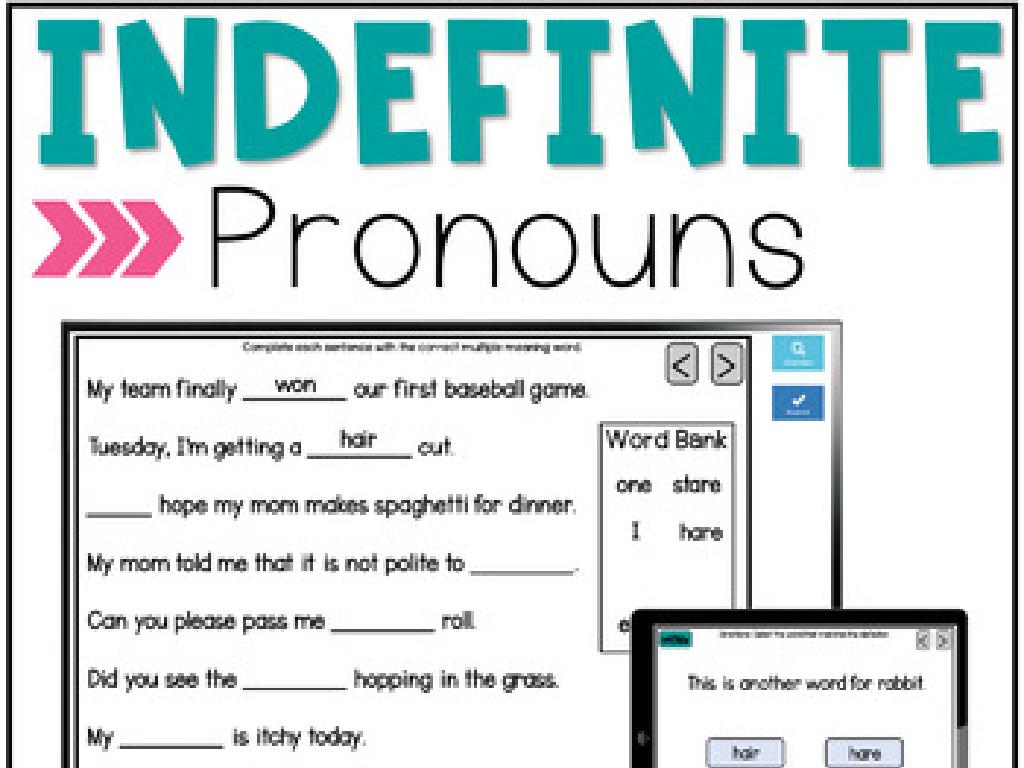Decompose A Number Up To 10
Subject: Math
Grade: Kindergarten
Topic: Take Apart Numbers Up To 10
Please LOG IN to download the presentation. Access is available to registered users only.
View More Content
Math Explorers: Number Detectives
– Become a number detective
– Learn to take apart numbers up to 10
– Break down numbers like 5 into 2 and 3
– Discover how small numbers combine
– Numbers are like puzzles; find pieces that fit
– Practice making bigger numbers
– Use objects like blocks to build the number 10
|
In this lesson, we introduce the concept of decomposing numbers, which is a foundational skill in understanding addition and subtraction. Encourage the children to think of numbers as puzzles that can be broken down into smaller pieces. Use tangible objects like blocks or counters to help them visualize the concept. For example, show them how the number 5 can be made from 2 and 3 or 4 and 1. Have them practice with different combinations to form numbers up to 10. This hands-on activity will help solidify their understanding of how smaller numbers come together to form larger ones. Prepare to guide them through several examples and ensure they grasp the concept of number decomposition.
Decomposing Numbers Up to 10
– What is decomposing numbers?
– Decompose: to split a number into smaller parts
– Breaking numbers into parts
– Example: 5 can be 2 and 3
– Numbers are like cookies
– Imagine a whole cookie that we break to share
– Sharing numbers like cookie pieces
– If we have 10 cookies and share with a friend, we give some and keep some
|
This slide introduces the concept of decomposing numbers, which is a foundational skill in understanding addition and subtraction. It’s important to use tangible examples that Kindergarten students can relate to, such as breaking a cookie into pieces. This analogy helps them visualize the concept of breaking apart a number into smaller, more manageable parts. Encourage students to think of a number as a whole item that can be split, and use hands-on activities with actual cookies or cookie cutters to reinforce the concept. The goal is for students to recognize that numbers up to 10 can be made up of smaller numbers combined in various ways.
Decomposing the Number 5
– Understanding ‘taking apart’ numbers
– Making 5 with 2 and 3
– Like putting together pieces of a puzzle
– Making 5 with 4 and 1
– Another way to put the puzzle together
– Making 5 with 5 and 0
– Even using 5 and nothing, we make 5!
|
This slide introduces the concept of decomposing numbers, specifically the number 5, to Kindergarten students. Begin by explaining that ‘taking apart’ a number means finding which smaller numbers can be combined to make it. Use tangible examples like blocks or fingers to show how 2 and 3 come together to make 5. Then, demonstrate other combinations like 4 and 1, and even 5 and 0, to show that there are multiple ways to decompose a number. Encourage the students to think of decomposing as a fun activity, similar to building and re-arranging a puzzle. This will help them understand that numbers can be broken down into parts and reassembled in different ways.
Hands-On Practice: Making the Number 6
– Try decomposing number 6 with blocks
– Explore different combinations
– Use your blocks to see how 6 can be made from other numbers
– There are multiple correct answers
– Example: 2 blocks + 4 blocks = 6 blocks
– Have fun finding all possibilities
|
This slide is designed for a hands-on activity where students will use physical blocks to decompose the number 6 into different number combinations. Encourage the children to explore and find various ways to make the number 6, such as 1+5, 2+4, or 3+3. Remind them that there is more than one way to make 6 and that all correct answers are valuable. This activity helps to solidify their understanding of number decomposition and reinforces the concept that numbers can be broken down into parts. For the teacher: Prepare enough blocks for the class, supervise the activity to ensure each child is engaged, and facilitate sharing of different combinations found by the students.
Decomposing Numbers with a Story
– Start with 5 ducks in a pond
– Imagine 2 ducks swim away
– How many ducks are left?
– Understand 5 = 2 + 3
– We broke down the number 5 into 2 and 3
|
This slide introduces the concept of decomposing numbers through a simple story that Kindergarten students can easily visualize and understand. Begin by asking the students to picture 5 ducks in a pond to engage their imagination. Then, narrate the story where 2 ducks swim away, prompting the students to think about how many ducks remain. This sets the stage for a discussion on how the number 5 can be decomposed into 2 and 3. Reinforce the concept by repeating the equation ‘5 = 2 + 3’ and encourage the students to visualize the separation of the ducks to understand the decomposition. Use manipulatives like toy ducks or counters to physically demonstrate the concept if possible. The goal is to make the abstract concept of decomposition tangible for young learners.
Let’s Play a Decomposing Game
– Roll the dice for a number
– Find ways to make that number
– If you roll a 4, you can make 1+3, 2+2, or 0+4
– Work with a friend
– Who finds the most combinations?
|
This interactive game is designed to help Kindergarten students understand the concept of decomposing numbers up to 10. By rolling a dice, students will be given a target number. They will then work with a partner to find all possible combinations of two numbers that add up to the target number. This activity encourages cooperative learning and helps students recognize that numbers can be broken down into parts in multiple ways. Teachers should facilitate the game by providing dice and guiding students on how to record their findings. Possible variations of the activity could include using objects to represent the numbers, drawing pictures, or using number cards.
Class Activity: Number Puzzles
– We’re solving number puzzles
– Each piece has a number
– Find two pieces that make a big number
– If the big piece says 6, which two pieces add up to 6?
– Have fun adding up to 10!
|
This activity is designed to help Kindergarten students understand the concept of decomposing numbers up to 10. Set up puzzles with large pieces labeled with numbers up to 10 and smaller pieces with numbers that can add up to the larger number. Students will search for two smaller pieces that, when added together, equal the number on the large piece. For example, if the large piece has the number 6, they might choose the pieces with numbers 4 and 2. This hands-on activity not only reinforces addition skills but also introduces the concept of number decomposition in a playful and engaging way. Possible variations of the activity could include using different combinations of numbers or introducing subtraction as a way to ‘take apart’ the number on the large piece.
Review and Goodbye, Math Explorers!
– Recap: Ways to decompose numbers
– We learned numbers can be split up like puzzles.
– Numbers break into smaller parts
– Just like how 5 can be 2 and 3, or 4 and 1!
– Celebrate our Math Explorers
– Excited for more math adventures
– Can’t wait to explore more numbers with you!
|
This slide is meant to wrap up the session on decomposing numbers up to 10. Start by recapping the different methods used to break down numbers into smaller parts. Reinforce the concept that there are multiple ways to decompose numbers, using examples like 5 being broken down into 2 and 3, or 4 and 1. Praise the students for their hard work and curiosity as ‘Math Explorers’. End the lesson on a high note, expressing excitement for the next class where they will continue to explore and enjoy math. This positive reinforcement helps build confidence and anticipation for future lessons.






